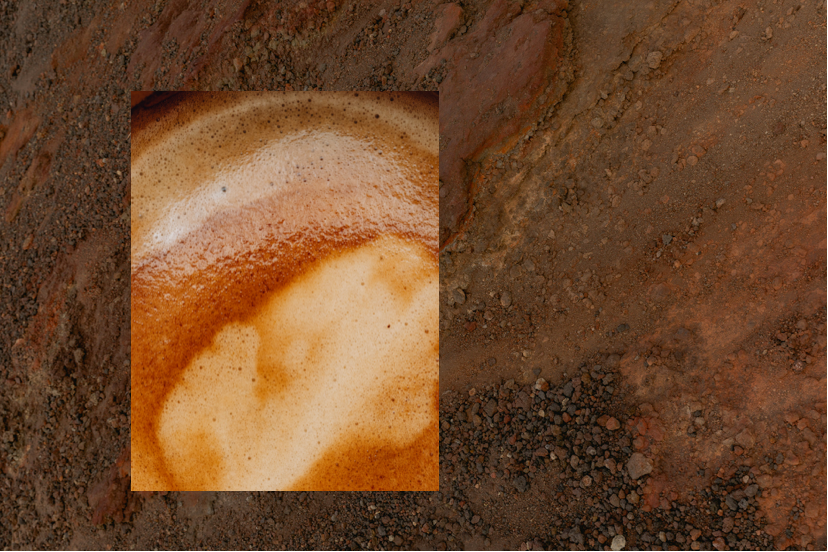
The Impact of Terroir on Coffee: How Soil, Climate, and Altitude Shape Flavor
Share
If wine has its terroir, so does coffee. The French concept of terroir refers to the unique set of natural factors—soil, climate, altitude, humidity, and even surrounding vegetation—that influence the flavor and characteristics of an agricultural product.
In specialty coffee, terroir is one of the most defining elements, shaping the complexity and sensory identity of each bean. But how exactly do these factors transform an ordinary coffee into an extraordinary experience? Let’s explore how terroir molds flavor and why some coffees stand out as truly exceptional.
1. The Role of Soil: Minerals That Nourish and Create Unique Flavor Profiles
The soil where coffee is grown not only provides essential nutrients for plant growth but also directly impacts the sensory profile of the cup.
Different soil compositions result in distinct flavor characteristics in the beans.
• Volcanic soils → Rich in potassium, iron, and phosphorus, these soils produce coffees with vibrant acidity and complex fruity notes.
(Hawaii, Costa Rica, Ethiopia)
• Clay soils → Retain more moisture, yielding full-bodied coffees with chocolate and caramel notes. (Brazil, Colombia)
• Sandy soils → Promote slower maturation of the beans, enhancing sweetness and balanced acidity. (Some African and Central American regions)
The choice of soil not only impacts crop yield but also determines the structural complexity and depth of flavors in coffee.
2. Climate and Coffee: How Temperature and Rainfall Influence the Bean
Arabica coffee, the most prized variety in the specialty market, thrives in tropical climates, but the conditions vary widely between regions.
Cooler temperatures (15-20°C / 59-68°F) → Produce denser beans, resulting in higher acidity and greater complexity. (High-altitude regions such as Ethiopia, Panama, and Kenya)
Warmer temperatures (above 25°C / 77°F) → Tend to accelerate maturation, yielding milder coffees with lower acidity. (Lower-altitude areas in Brazil and Central America)
Well-balanced rainfall → Is essential for coffee quality. Evenly distributed rain promotes uniform ripening, while prolonged droughts or excessive humidity can compromise the flavor profile.
Brazil’s diverse microclimates allow the production of a wide range of coffee profiles, from rich, chocolatey notes to bright, floral, and citrus-driven flavors.
3. Altitude: The Factor That Defines Acidity and Complexity
Altitude is one of the most critical factors in defining coffee quality. Higher elevations create slower maturation, allowing beans to develop more natural sugars and organic acids, which result in refined, sophisticated flavors.
• Low-altitude coffees (below 900m / 3,000 ft) → More full-bodied, lower acidity, with chocolate and nutty notes. (Some Brazilian and Indonesian coffees)
• Mid-altitude coffees (900m - 1,300m / 3,000 - 4,300 ft) → A balance of sweetness and acidity, often with fruity and floral characteristics. (Colombia, Guatemala, parts of Brazil)
• High-altitude coffees (above 1,300m / 4,300 ft) → Bright acidity, delicate body, and intense citrus and floral notes. (Ethiopia, Panama Geisha, Kenyan AA)
The world’s most renowned terroirs are recognized for producing highly complex coffees, many of which achieve record-breaking auction prices in the specialty market.
4. How to Choose a Coffee Based on Terroir
Now that you understand the impact of terroir, how can you use this knowledge to select a truly special coffee?
1 - Identify your preferred sensory profile → Do you enjoy chocolatey, sweet coffees, or are you drawn to bright, citrusy, floral notes?
2 - Explore origin regions →
• High-altitude regions (Ethiopia, Kenya, Panama) → Expect vibrant acidity and complex fruit-forward flavors.
• Mid-altitude regions (Colombia, Brazil, Guatemala) → Tend to offer balanced, sweet, and well-structured coffees.
• Low-altitude regions (Indonesia, Vietnam, lower regions of Brazil) → More earthy, nutty, and full-bodied.
3 - Consider post-harvest processing →
• Natural and fermented coffees → Tend to have bolder, fruitier, and sweeter profiles.
• Washed coffees → Highlight clarity, brightness, and a cleaner flavor profile.
With these insights, you can curate your coffee selection to match your personal taste preferences and embark on a more intentional sensory journey.
Conclusion: Terroir as the Soul of Coffee
Just as great wines carry the essence of their soil and climate, specialty coffees reflect the identity of their terroir in every sip. The soil, climate, altitude, and post-harvest processes create a unique signature, transforming each bean into a liquid expression of its origin.
The next time you savor an exceptional coffee, remember: you’re not just tasting flavor—you’re experiencing a story. The story of the soil that nurtured it, the climate that shaped it, and the producer who honored the art of terroir.

